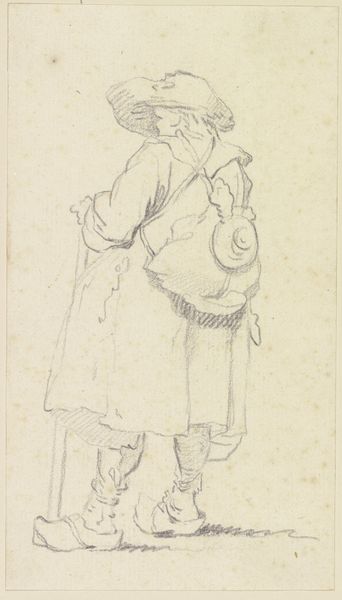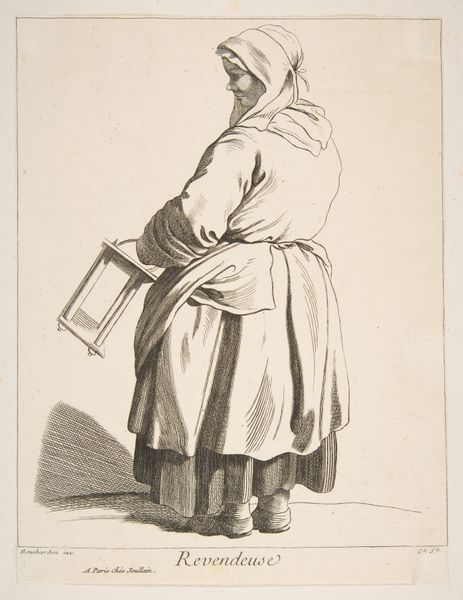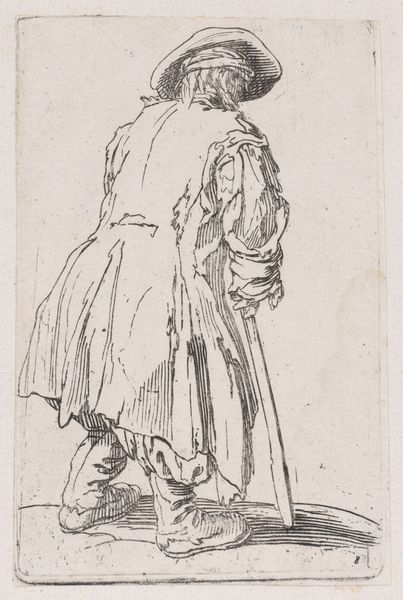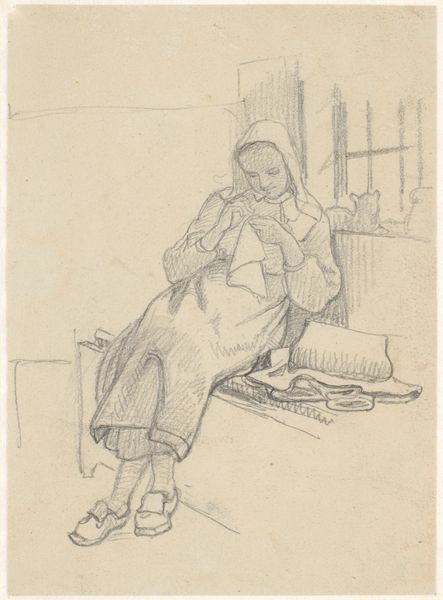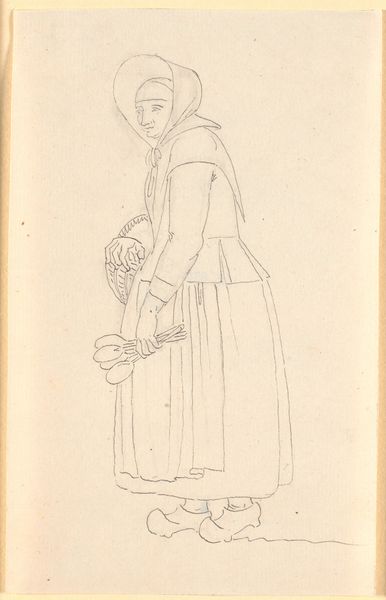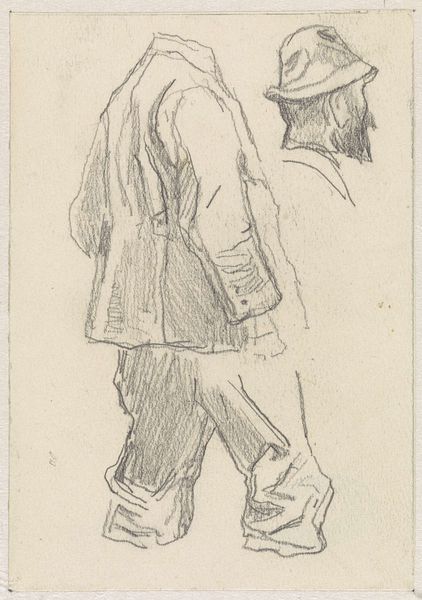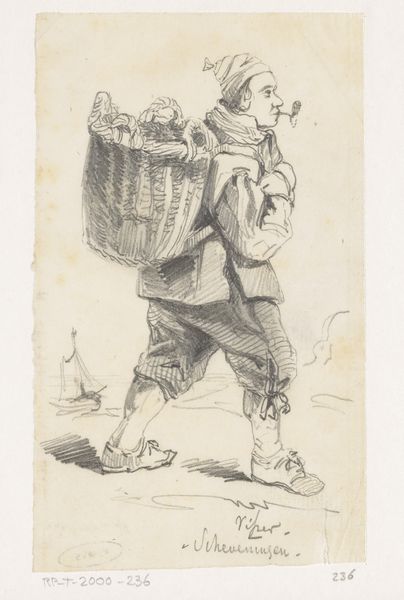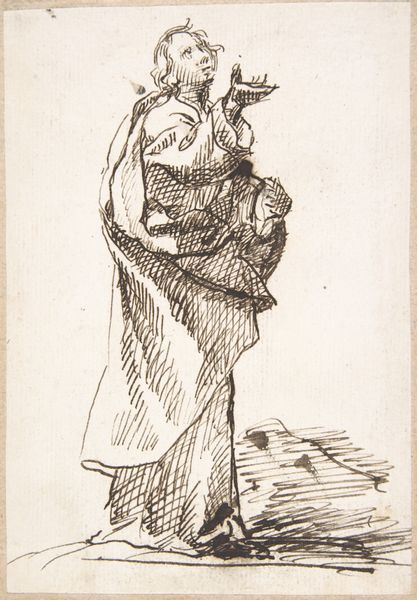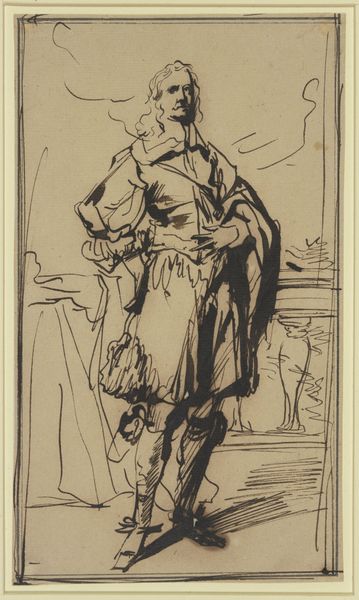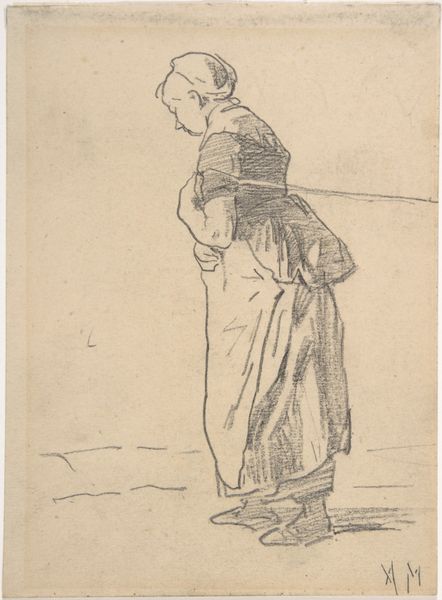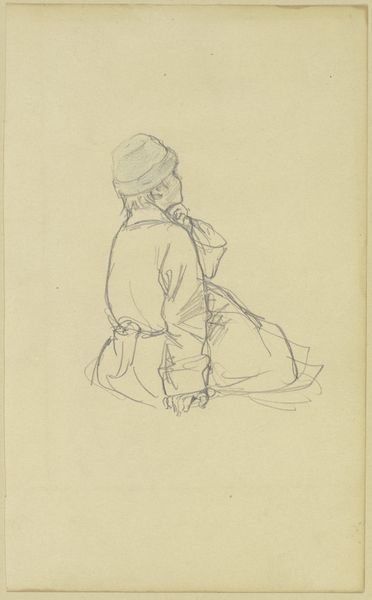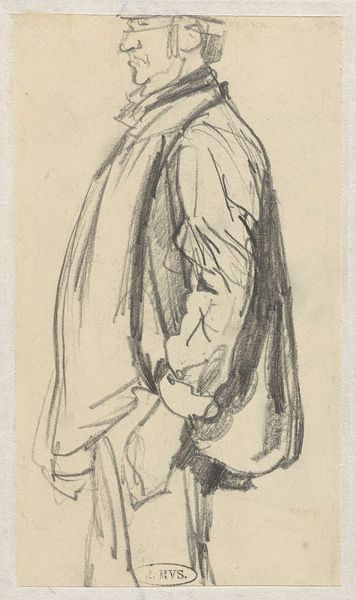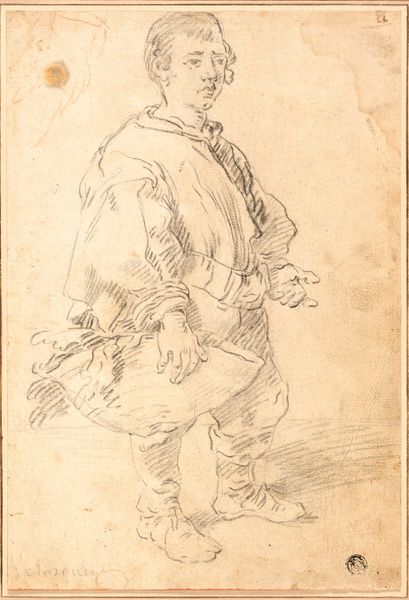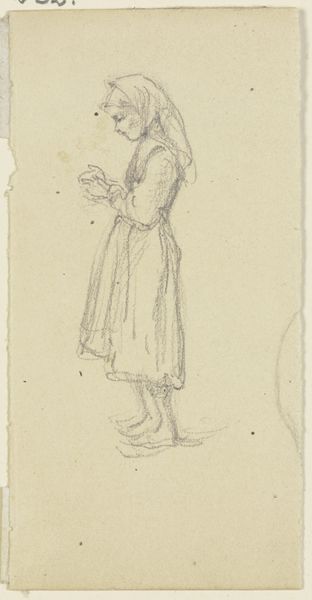
Dimensions: 204 mm (height) x 158 mm (width) (bladmaal)
Curator: This is "Knitting Swedish Woman with Basket on her Back," a pencil drawing created by Wilhelm Marstrand in 1851, and part of the collection at the Statens Museum for Kunst. Editor: There’s a quiet, unassuming dignity to her, isn't there? The humble stance and soft lines make this piece so gentle. Curator: Absolutely. I'm particularly interested in the visible process of making evident in this work. Look at the pencil strokes—Marstrand wasn’t trying to hide the labor. You can almost feel the texture of the paper, see the pressure of his hand. This focus on process elevates it, doesn't it? Editor: It does. Consider her basket—likely containing the tools of her trade, maybe her spinning wheel or flax. The weight seems evident in the stoop of her shoulders. It speaks to the burdens, both literal and figurative, placed on women’s labor at the time. Curator: Yes, it prompts me to consider her social and economic context. Who was she? Was she producing for domestic use or for the market? What were the conditions of her labor? Editor: And what did it mean to represent her? Was this an idealized image, romanticizing rural life, or a more accurate depiction of the realities faced by working women in 19th-century Sweden? I am interested in understanding how gender and class intersect. Curator: These questions surrounding gender roles were important and highlight a key moment in the 19th century's re-evaluation of craft as part of industrial production. Even through a fairly standard subject, Marstrand hints to changing material dynamics. Editor: I agree. Beyond being simply a quaint image of a rural worker, this drawing invites a more probing consideration of the socio-economic realities that shaped her world. Curator: By focusing on process and production, the art highlights the changing relationship with making objects by hand, drawing attention to new material conditions of labor in nineteenth-century Sweden. Editor: By prompting consideration of both this woman's world and of what is not present here, it becomes an example of visual activism as an inquiry into laboring women's experiences at a crossroads. Curator: That’s a powerful reading. This close analysis deepens the meaning of what might first appear a simple genre scene. Editor: Precisely. Seeing art through an intersectional lens reveals layers of meaning otherwise missed.
Comments
No comments
Be the first to comment and join the conversation on the ultimate creative platform.
